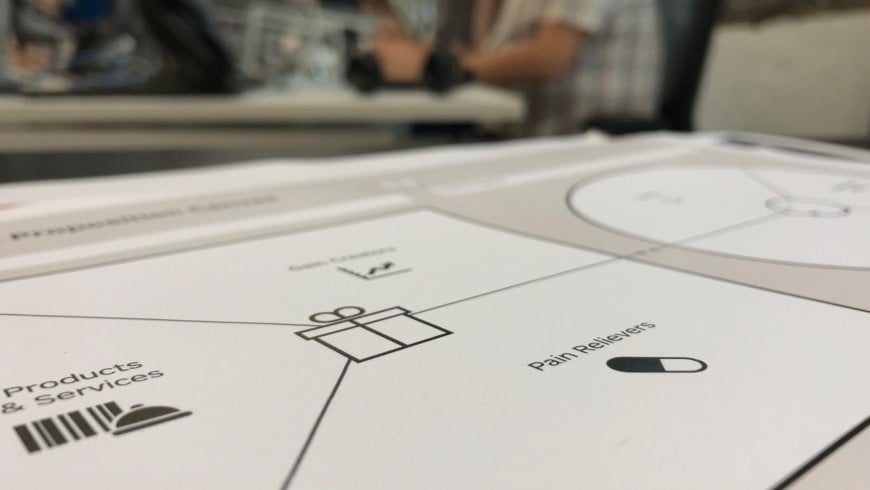
If innovation is about translating an idea or invention into a product or service that creates value, then articulating how you propose to achieve this outcome is vital. So let's look at how to develop, test and polish your VP, and some good examples.
The value proposition lies at the heart of any business model, product or service, and is a fundamental expression of why a customer or stakeholder would want it. It should express clearly not just what the product or service has to offer, but also why it is more appropriate for the target customer than any competing product or service.
Whether it's a not-for-profit creating social value, an FMCG product shifting units in-store, or a B2B company offering a professional service, unless the value proposition makes sense it is going to be difficult to convince customers to purchase.
Creating your value proposition
So what makes a great value proposition? While there are many differing views on how they should be written, the key elements you should consider when putting yours together are always the same.
- Customer: who is the product or service for? This may not be the person that pays for it - for example with public service users - but is the person, organisation or group that will use it. What kind of customer are they?
- Jobs to be done (see Further Reading): what is the customer trying to do? This might be as simple as trying to order a widget or find something to eat, all the way to something more nebulous such as trying to feel fulfilled.
- Problem: What problem in getting the job done does this product or service solve for the customer? What are the pain points they experience when trying to achieve their objectives?
- Product/Service: What is the product or service, in a nutshell?
- Benefits: What will change for the customer if they use this product or service? Will they be happier, better-looking, more relaxed, more profitable, more secure?
- Differentiator: What makes this product or service different from the competition? Is it cheaper, faster, more specialised, easier, more flexible? To have a robust value proposition, your product or service must differentiate itself on at least one aspect.
It can often be helpful to write your value proposition in basic language first, incorporating all the elements, before you try to test and refine it into something more customer-friendly for your website, marketing material, or elevator pitch. A simple template to do this might be:
"For [customers] who have [problem], our [product/service] will deliver [benefits] while being [differentiator] than the competition"
Obviously this version of your value proposition is not the one you will put in front of the customer, but is a crucial step in making sure what you eventually draft is robust and makes sense. Now's the time to evaluate what you've written and test the assumptions it contains.
Testing your value proposition
To test whether your value proposition is robust enough, you need to examine three elements:
- Have you identified the customers' needs, jobs, pains and gains correctly?
- Do the features and benefits of your product or service align with those needs?
- Is the customer prepared to pay for your solution, and would they choose it over any competing products or services?
There are many ways of testing your assumptions about these elements. You could, for example, simply ask the customer to tell you. Unfortunately, customers are terrible at knowing what they want, and even worse at articulating how much they want it, so it's often worth using more creative ways of testing those assumptions, such as observation, workshops, games, tests using AdWords to identify pain points for which people are searching, and many others. (See Further Reading for some useful resources.)
Once you have tested your value proposition and are satisfied that it is robust, makes sense, and provides a compelling enough reason for your customers to buy, you can articulate it in a way that will appeal to your target customer.
Making your value proposition sing
The final step in creating a great value proposition is to polish up the language. The version you created in step 1 may well be accurate, but it's not going to sell anything.
There isn't one single way to write up a value proposition, as it depends how much you need to emphasise each element. You will probably end up with several versions of your proposition to use, depending on the channel, customer segment or campaign, but that's fine as long as they are all rooted in the basic version you created at the beginning.
A useful exercise can be to look at other successful value propositions to see how they have been written. It's also important to note that a value proposition is NOT a strapline: it needs to be more specific, so is often longer than a strapline.
A great value proposition should be:
- Concise
- Clear
- Easy to understand
- Compelling
Examples:
Dropbox
Work better, safer, together. Dropbox Business simplifies your work, with a central place to access and share files.
Stripe
Payment infrastructure for the internet. Whenever you're building a marketplace, mobile app, online storefront, or subscription service, Stripe has the features you need.
Starling Bank
This is a bank account – but not as you know it. It’s personal, joint, euro and business banking that’s mobile and built for the way we live now. With the Starling banking app you'll get instant notifications when you spend or get paid, insights that reveal your spending habits, no fees overseas, 24/7 support and an application that only takes minutes.
Thinx
Period-proof underwear that works.
Further reading:






